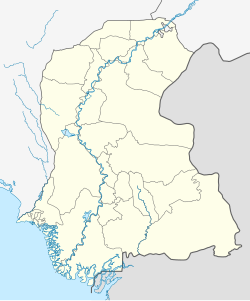| 2017 Sehwan suicide bombing | |
|---|---|
 An interior view of Lal Shahbaz Qalandar's shrine in 2014 | |
| Location | Sehwan Sharif, Sindh, Pakistan |
| Date | 16 February 2017 |
| Target | Sufi pilgrims |
Attack type | Suicide bombing, terrorist attack |
| Weapons | Suicide jacket, [1] grenade [2] |
| Deaths | 91 (+1 bomber) [3] [4] [5] [6] [7] |
| Injured | 300+ [8] [9] |
| Perpetrators | Islamic State of Iraq and the Levant – Khorasan Province |
| Assailants | 1 suicide bomber |
On 16 February 2017, a suicide bombing took place inside the Shrine of Lal Shahbaz Qalandar in Sehwan, Sindh, Pakistan, where pilgrims were performing a Sufi ritual after the evening prayers. [2] [10] [11] At least 90 people were killed and over 300 injured. [3] [8] [12] [13] [14]
Contents
The Islamic State of Iraq and the Levant – Khorasan Province claimed responsibility for the bombing. [10] Services at the shrine were resumed the next day in an act of defiance against terrorists, [15] while leading Pakistani performers partook in the traditional Sufi whirling dance at the shrine a few days later as a protest against the radical Islamist perpetrators. [16]
The attack followed a series of terrorist incidents earlier in the month, including a suicide attack in Lahore. Pakistani authorities alleged that the attacks were orchestrated by jihadists in Afghanistan. [17]

